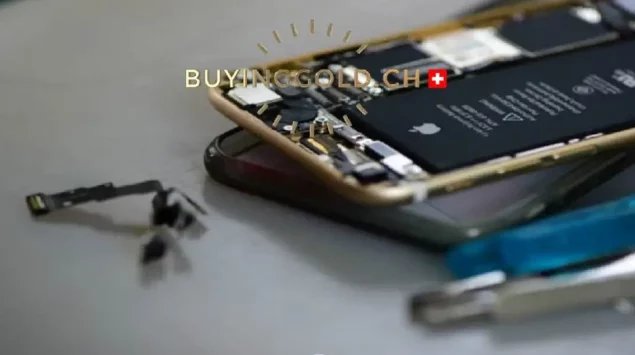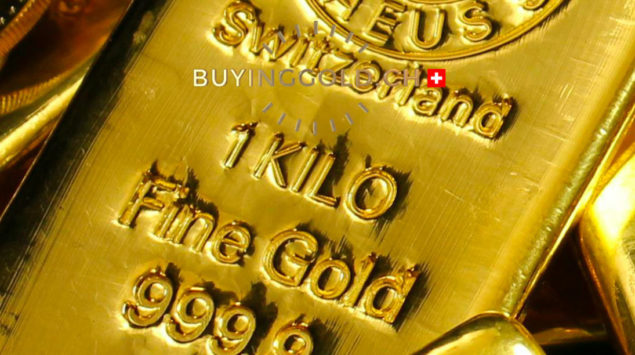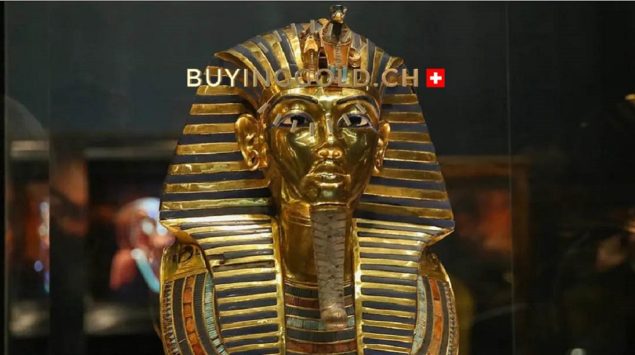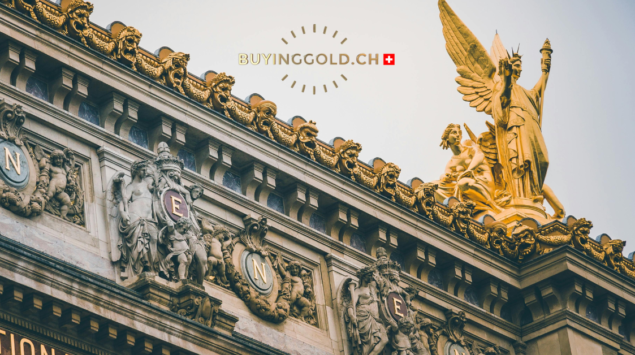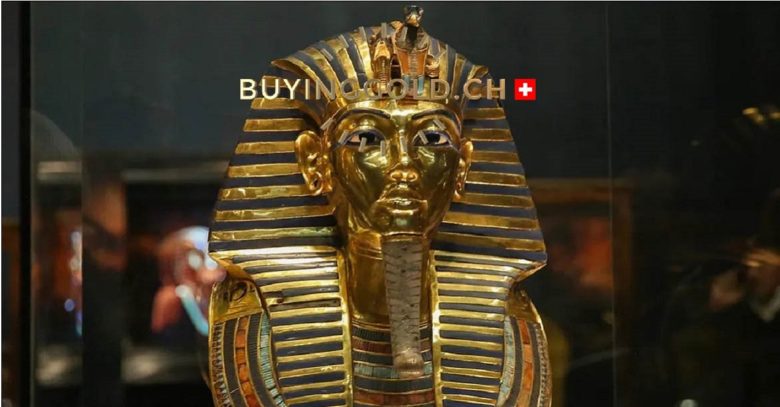
- How Ancient Civilizations First Used Gold
- Sacred Buildings and the Glow Factor
- Renaissance Artists and Their Gold Problem
- Architecture That Announces Itself
- Music and the Gold Standard
- Eastern Traditions and Subtle Mastery
- Contemporary Artists and the Value Question
- The Craft Behind the Glamour
- Cultural Meanings Across Continents
- Keeping Golden Art Alive
- Tomorrow’s Golden Possibilities
- Why Gold Endures
Walk into any major museum and you’ll notice something: the gold pieces draw crowds. There’s the Egyptian room where people cluster around Tutankhamun’s mask, or the medieval galleries where illuminated manuscripts stop visitors mid-stride. Gold has this effect on us—it’s been happening for thousands of years.
Gold has been used in art for over 6,000 years—longer than written language itself.
The ancient Egyptians figured this out early. Around 2500 BCE, their craftsmen could beat gold so thin you could practically see through it. They’d hammer it over wooden forms, creating masks and jewelry that still make headlines when archaeologists uncover them. But Egypt wasn’t unique in this obsession:
- Prehistoric Bulgaria – Produced intricate gold pieces 6,000 years ago.
- Mesopotamia – Mastered granulation (fusing tiny gold beads).
- Ancient Greece – Combined gold with ivory for monumental temple sculptures.
Sacred Buildings and the Glow Factor
The Hagia Sophia hits you like a wall of light. Byzantine craftsmen covered the interior with gold mosaic tiles, but they weren’t just slapping them up randomly. Each tiny piece—called a tessera—was angled slightly different from its neighbors. When sunlight streams through the windows, the whole dome seems to pulse.
Did you know?
Byzantine mosaicists deliberately angled each gold tessera to interact with natural light at specific times of day. This wasn’t just decorative—it was a visual theology of divine illumination, tailored to how light moved through sacred space.
Byzantine gold mosaic work required incredible planning. Artists had to understand how light moved through the building, where people would stand, how their eyes would track across the surfaces. They used different sizes of gold pieces, mixed pure gold with glass, and varied the angles to create specific effects.
Medieval churches took a different approach. Instead of covering everything in gold, they concentrated it in altarpieces and religious objects. The Golden Altar of Sant’Ambrogio in Milan uses relief carving to catch candlelight—the gold isn’t just applied to the surface, it’s built into the three-dimensional forms.
Islamic buildings found their own solutions. The Dome of the Rock’s golden dome serves as a landmark visible across Jerusalem, but Islamic artists also developed incredibly sophisticated calligraphy in gold. Arabic script becomes both text and decoration, with gold highlighting creating visual rhythms that complement the meaning of the words.
You can see this same principle at work in smaller Islamic objects. A 14th-century Quran from Cairo uses gold not just for decoration but to guide the reader’s eye through the text. The metal becomes part of the reading experience.
Notable examples of sacred gold use include:
- Hagia Sophia (Istanbul): Gold mosaics that transform light into a pulsing, sacred atmosphere.
- Sant’Ambrogio’s Golden Altar (Milan): Relief-carved gold surfaces that interact dynamically with candlelight.
- Dome of the Rock (Jerusalem): A massive golden dome visible across the city, symbolizing divine presence.
- 14th-century Quran (Cairo): Gold calligraphy used to both beautify and structure the reading experience.
Renaissance Artists and Their Gold Problem
Renaissance painters faced a dilemma: how do you include gold in realistic paintings without making them look medieval? The old style used flat gold backgrounds, but these new artists wanted perspective, natural lighting, convincing space.
Some, like Botticelli, got creative. Instead of gold backgrounds, he used the metal for specific details that would actually be gold in real life—jewelry, threads in expensive fabric, highlights in blonde hair. In “The Birth of Venus,” he applied gold leaf strand by strand to the goddess’s hair. Try that sometime. Gold leaf tears if you look at it wrong.
| Artist | Approach to Gold | Goal or Effect |
| Botticelli | Fine gold detailing | Highlight wealth and beauty |
| van Eyck | Glazed oils over gold leaf | Luminous realism |
| Caravaggio | No gold, pure chiaroscuro | Intensity and emotional realism |
| Fra Angelico | Hybrid Gothic-Renaissance style | Blend of symbolism and realism |
Jan van Eyck found another solution. His oil painting techniques let him glaze transparent colors over gold grounds, creating surfaces that seemed to generate their own light. The Flemish approach to gold in painting influenced European art for centuries. Artists would apply gold leaf to their panels, then paint over it with thin, transparent layers that let the gold show through in specific areas.
But other artists rejected gold entirely. Caravaggio, for instance, preferred dramatic lighting effects created with paint alone. This split between artists who embraced gold and those who abandoned it created tensions that lasted well into the 17th century.
Architecture That Announces Itself
Gold as Power: Versailles and Beyond
Versailles wasn’t subtle about its gold use. The Hall of Mirrors alone required master craftsmen who could apply gold leaf to complex moldings, maintain it in high-traffic areas, and design lighting that would show it to best advantage. This was political theater as much as interior design—foreign ambassadors were supposed to be overwhelmed.
The technical challenges were enormous. Gold leaf adheres best to surfaces prepared with multiple layers of sizing and colored clay called bole. Get any step wrong, and the gold flakes off. At Versailles, they had teams of specialists just for gold maintenance.
Golden Domes and Modern Solutions
Russian church builders developed different methods for their golden dome construction. Moscow’s winters would destroy most gold applications, so they used copper substrates with specially formulated gold leaf adhesives. The Cathedral of the Assumption’s multiple golden domes required engineering solutions that balanced structural requirements with visual impact.
Contemporary architects still wrestle with gold’s challenges. Frank Gehry uses gold-colored titanium that creates similar effects to gold leaf but handles weather better. It’s not quite the same—titanium lacks gold’s specific reflective qualities—but it lets architects achieve similar visual goals without the maintenance headaches.
Music and the Gold Standard
Composers have long had complex relationships with gold—sometimes seeing it as a symbol of enlightenment, other times as the root of corruption.
Symbolic roles of gold in music:
- Mozart’s The Magic Flute – Gold represents wisdom and spiritual light. Sarastro’s realm is bathed in golden imagery, linking gold to enlightenment and higher ideals.
- Wagner’s Ring Cycle – Gold symbolizes power and greed. The Rheingold drives the narrative across four operas, corrupting everyone who touches it.
But beyond metaphor, gold plays a functional role in the construction of musical instruments:
Practical uses of gold in instruments:
- Gold-plated brass instruments – Help resist corrosion from moisture and saliva. Some musicians claim it subtly affects tone quality, though experts are divided.
- Ceremonial instruments – Used in royal events and official performances, gold trumpets signal prestige and tradition as much as sound.
Gold’s place in musical culture also appears in folk traditions:
Gold in folk music and oral history:
- American gold rush ballads – Capture both the excitement and disillusionment of the 1850s. Songs often warned of lost fortunes and broken dreams.
- Global mining regions – Traditional songs from Wales, South Africa, and California reflect the human and environmental cost of gold fever.
- Common theme: Most folk songs about gold aren’t celebrations—they’re cautionary tales about greed and loss
Despite the shimmer, gold in music often carries a warning: its beauty is undeniable, but its pursuit can come at a cost.
Eastern Traditions
Japanese maki-e lacquer techniques create some of the most sophisticated gold effects in decorative arts. Artists sprinkle gold powder onto wet lacquer, controlling particle size and distribution so precisely that the patterns have visual rhythms as complex as musical compositions.
Fun fact:
The finest maki-e brushes used for applying gold in Japanese lacquerware are traditionally made from a single hair—often taken from the neck of a newborn baby or from the craftsman’s own eyelashes. This extreme precision allows artists to control individual flecks of gold with surgical delicacy.
This isn’t easy work. The lacquer has to be exactly the right consistency—too wet and the gold sinks, too dry and it won’t adhere. Masters spend decades learning to read lacquer surfaces, understanding when conditions are perfect for gold application.
- Japanese screen painting used gold differently. Kanō school artists created landscapes where mountains and trees emerge from backgrounds of pure gold leaf. These aren’t realistic backgrounds—they represent mist, divine light, or the mysterious forces of nature itself.
- Chinese gold lacquer work required different skills. Multiple layers of lacquer and gold created surfaces so durable they could survive centuries of use while maintaining their brilliance. Ming Dynasty pieces show techniques that modern craftspeople are still trying to figure out.
- Indian miniature painters worked with gold on an almost microscopic scale. A single painting might contain hundreds of tiny gold details—jewelry, architectural elements, textile patterns—each applied with brushes made from single hairs.
Contemporary Artists and the Value Question
Jeff Koons’s gold sculptures sell for tens of millions of dollars, making headlines that often focus more on price than artistry. But Koons isn’t just making expensive objects—he’s forcing viewers to confront their assumptions about art, value, and taste.
His balloon dog sculptures, cast in mirror-polished stainless steel with gold finishes, look like inflatable toys but cost more than most people’s houses. The disconnect is intentional. Koons wants us to think about what makes art valuable.
What makes something “gold” in art—its material, or its meaning?
Contemporary artists like Jeff Koons challenge us to look beyond price tags and ask deeper questions about value, context, and perception.
Installation artists use gold to create different kinds of experiences. Anselm Kiefer’s massive paintings incorporate gold leaf into landscapes that suggest both beauty and destruction. The gold catches light but also emphasizes the rough, damaged surfaces of his canvases.
Some contemporary artists work exclusively with recycled gold, addressing environmental concerns about mining while maintaining the metal’s aesthetic properties. This creates interesting conceptual frameworks—art made from old jewelry, electronic waste, dental work.
Digital artists have started exploring virtual gold effects LED installations that mimic gold’s reflective properties, projection mapping that creates temporary golden surfaces, even VR experiences where users can interact with impossible golden environments.
The Craft Behind the Glamour
Try applying gold leaf sometime and you’ll understand why master gilders are paid well. The sheets are so thin—about 1/250,000th of an inch—that breathing on them tears them apart. Humidity, temperature, air currents all affect the process.
Surface preparation techniques matter enormously. Traditional methods involve multiple layers of sizing, gesso, and colored clay bole. Each layer has to be sanded smooth, because any imperfection shows through the gold. The bole color affects the final appearance—red bole makes gold look warmer, yellow bole makes it cooler.
Burnishing tools determine the final surface quality. Artists have used a variety of tools, including:
- Agate stones
- Bloodstone
- Specially prepared animal teeth
Each tool creates different textures, ranging from matte to mirror-bright. Master craftspeople can even vary their burnishing within single pieces to achieve complex surface effects.
Some historical techniques are too dangerous to use today. Fire gilding involved mercury amalgam and killed many craftspeople through mercury poisoning. Modern electroplating achieves similar results more safely, but it requires different skills and produces subtly different effects.
Cultural Meanings Across Continents
African kingdoms developed sophisticated goldworking techniques that European traders often underestimated. The famous gold weights from Ghana weren’t just functional—they were miniature sculptures representing proverbs, historical events, and cultural values.
“Gold is the universal symbol of power, wealth, and the divine.” — William Boyd, art historian.
Pre-Columbian American civilizations used gold in ways that amazed and horrified Spanish conquistadors. Inca temples incorporated gold as structural elements, not just decoration. The Spanish melted most of it down, destroying artistic traditions that had developed over centuries.
Interesting fact: In West Africa, the gold weights of the Ashanti people served both as precise measurement tools and as symbolic storytelling devices, depicting proverbs and cultural wisdom.
Celtic and Germanic traditions created intricate gold work emphasizing knotwork and animal motifs. These European medieval gold styles influenced manuscript illumination, jewelry, and architectural details across the continent.
Statistic: About 50% of all the gold ever mined by humanity has been used in jewelry, highlighting the metal’s enduring value as a symbol of beauty and status.
Despite these cultural differences, certain themes appear everywhere gold is used. Associations with divinity, permanence, and exceptional value seem to be universal human responses to gold’s unique properties.
Keeping Golden Art Alive
Gold conservation presents unique challenges. The metal itself doesn’t deteriorate, but everything it’s attached to does. Wood panels crack, canvas sags, adhesives fail. Conservators need to understand both traditional techniques and modern science.
“Every golden surface holds a secret. Our job is to uncover it without erasing it.”
— Dr. Eliza Grant, senior art conservator at The Met.
The biggest problem is often figuring out exactly how historical gold surfaces were created. Different periods and regions used different methods, and each requires different conservation approaches. Get it wrong and you can damage irreplaceable artwork.
Climate control matters enormously. Temperature and humidity changes make substrate materials expand and contract differently than gold, causing flaking and cracking. Some major museums can only display their most important gold pieces under strictly controlled conditions.
Documentation techniques have become incredibly sophisticated. Specialized photography captures subtle variations in gold surfaces under different lighting conditions. This helps conservators track changes over time and plan interventions when necessary.
Tomorrow’s Golden Possibilities
Gold’s future in art is being shaped by technology, sustainability, and imagination. Artists are experimenting with recycled materials—like e-waste, dental gold, and old jewelry—to address ethical concerns about mining while retaining the metal’s prestige and aesthetic appeal. At the same time, 3D printing is enabling intricate gold-leaf applications on forms that would have been impossible to craft by hand. Virtual environments now allow users to interact with shimmering, simulated gold that responds to light and movement in real time—no physical material required.
But these innovations come with new questions: does digital gold evoke the same emotional response as the real thing? Can recycled gold carry the same symbolic weight as freshly mined ore? Some artists embrace these tensions directly, using them as part of the work’s meaning. Others focus on practicality—gold-tinted titanium replaces traditional leaf in architecture, offering similar radiance with better durability. And then there’s gold’s role beyond art entirely: in satellites, medical tools, and quantum computing. As our relationship with the material evolves, artists will keep pushing its limits—not only to decorate, but to provoke, reflect, and reinvent what gold means in the modern world.
Why Gold Endures
Gold’s appeal seems built into human nature. Every culture that’s encountered it has found ways to incorporate it into their most significant expressions—religious, political, artistic. Maybe it’s evolutionary—our brains are wired to notice things that shine. Maybe it’s cultural—thousands of years of associations with divinity and power have made gold impossible to ignore.
But more than that, gold offers artists something rare: a material that’s both technically challenging and symbolically rich. It catches light in ways other materials can’t. It doesn’t tarnish or fade. It bridges the ancient and the futuristic, the physical and the spiritual. That’s why it endures—not only in museums and temples, but in the minds of those still looking for meaning in what shines.
From ancient temples to virtual worlds, gold continues to gleam—not just with light, but with meaning.
This article was thoughtfully created by the team at achatdor.ch—where the enduring beauty of gold meets insight, history, and inspiration.





